This review is part of the Cameras of the Dead series which features dead cameras that I’ve wanted to review that either didn’t work, or was otherwise unable to shoot.
This review was originally part of a three camera review published on October 29, 2021 in the 10th edition of the series, but those multi camera reviews don’t index well, so I am separating this into it’s own post to make it easier to find.
This is a Petri Flex 7, a 35mm SLR camera produced by Petri Camera K.K. starting in 1964. The Petri Flex 7 was Petri’s top of the line camera at the time featuring a large round CdS exposure meter prominently located on the front surface of the pentaprism. The camera offered match needle exposure, a full range of shutter speeds, a good selection of lenses, and other modern features like automatic diaphragms, automatic film counter reset, and a self timer. Like other Petri cameras, the Petri Flex 7 was an economic choice that offered similar features, but for less. Sadly, a poor reputation of the company and cameras that often broken down, the camera did not sell in large numbers and is difficult to find in working condition today.
Film Type: 135 (35mm)
Lens: 55mm f/1.8 Petri CC Auto Coated 6-elements in 4-groups
Lens Mount: Petri Breech Lock Bayonet
Focus: 2 feet to Infinity
Viewfinder: Fixed SLR Pentaprism w/ Viewfinder Match Needle
Shutter: Cloth Focal Plane
Speeds: B, 1 – 1/1000 seconds
Exposure Meter: Coupled CdS Cell
Battery: 1.35v Mercury PX625
Flash Mount: Cold Shoe w/ FP, X Sync Port
Weight: 955 grams (w/ lens), 739 grams (body only)
Manual: https://www.cameramanuals.org/petri_pdf/petri_flex_7.pdf
I haven’t had the best luck with Petri cameras. Don’t get me wrong, I like them, and I want to use them, but it seems of any Japanese camera maker Petri has the poorest track record of cameras that can be used today. While judging a company on their inability to make products that survive over half a century probably isn’t fair, there’s quite a number of stories of Petri cameras failing back when these were sold new.
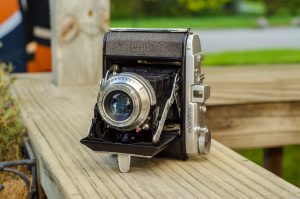
When they were called Kuribayashi prior to 1962, many of the company’s cameras were quite good. Early Petri rangefinders along with folding Kuribayashi branded cameras like the Karoron were comparable to the best Japanese camera makers but at one point, their quality control started to suffer.
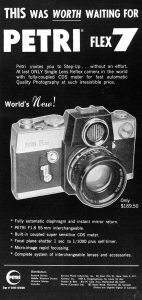
While some Petri rangefinders like the Color Corrected Super are quite good and suffer the rigors of time equally to other Japanese rangefinders, it seems Petri’s SLRs don’t hold up quite as well. Starting with the company’s first attempt, the 1959 Petri Penta is also hard to find working today. The one example I have reviewed would fire it’s shutter but only after having to double wind the film advance, which is not supposed to happen since it’s a single wind camera. Even after firing the shutter, the speeds were all over the place and the curtains weren’t traveling at the right speed to get evenly exposed images.
No matter, I mounted the excellent Petri Orikkor lens to a different M42 screw mount camera and took some test shots. After switching to Petri’s own breech lock bayonet lens mount with the next model, quality control didn’t seem to improve as I’ve had trouble with every other Petri SLR I’ve handled, including the Petri Flex V which stopped working three quarters of the way through my one and only roll. I’ve come across many other Petri SLRs over the years, all of which had some sort of problem preventing it’s use. When I had the chance to pick up a nice looking Petri Flex 7, I was prepared for trouble, well, that’s what I got.
The Petri Flex 7 made it’s debut in 1964, and despite the number 7 in the name, was Petri’s 5th SLR overall. Most likely, the number 7 was chosen to coincide with Petri’s then current Petri 7 rangefinder. When it went on sale, it carried a retail price of $189.50 with a Petri 55mm f/1.8 lens. When adjusted for inflation, this price compares to about $1670 today.
The Petri Flex 7 was the company’s first SLR with an in-body exposure meter. Other cameras in the Petri Penta series had an available clip on accessory meter, but nothing built in. There are two name variants of the Petri Flex 7, with most of them having “Petri” and “Flex” as two separate words, but there were a small number called the “Petriflex 7”.
When it was sold, it carried a retail price of $189.50, which compares to around $1660 today. In the ad to the right, we see the camera with a black bezel around the lens mount and meter, which to my knowledge was never built, suggesting early prototypes might have looked different.
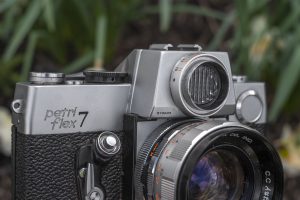
By far, the most striking feature of the Petri Flex 7 is the large CdS exposure meter on the front face of the pentaprism, right above the lens. I am unsure if this was intentional, but this look is very similar to the large round meter in the same location of the Zeiss-Ikon Contarex. The Contarex was an extremely expensive and high quality camera that first hit the market in 1960, so it stands to reason that Petri intentionally mimicked the look to suggest a sense of luxury for their model, or perhaps it was just a coincidence.
Beyond the meter, the Petri Flex 7 is a large and hefty camera. Weighing 955 grams with the included 50mm f/1.8 lens or 739 grams without, the Petri Flex 7 body is on par with a Nikon F2 with the DE-1 “standard” prism.
The tall and flat top of the meter and the broad shoulders of the rest of the top plate give the camera an oversized look, which until you get into your hands, isn’t as bad as it shows in pictures.
Most of the Petri Flex 7’s controls are in the same locations you’d expect to see them on other SLRs. The rapid rewind knob is on the left, next to the top plate match needle (which on my example was missing a top cosmetic piece). The large pentaprism has an accessory shoe on top, and to it’s right is a large shutter speed dial, rapid film advance lever, and finally the automatic resetting exposure counter.
There’s not much to see on the back or the bottom other than the opening for the viewfinder, rewind release button, and centrally located 1/4″ tripod socket.
As with every Petri SLR made between the 1960 Penta V and the 1974 FTX, the Petri Flex 7 uses the Petri breech lock bayonet lens mount. If you’ve ever used a manual focus Canon SLR with the FL/FD mount, the one here works the same way. Align a red dot on the lens with one on the mount and turn the metal collar attached to the camera and that’s all. It’s quite quick once you get used to it, but not having to rotate the lens while mounting and dismounting is a little strange for someone not used to it.
While Petri’s quality control of their cameras may be in doubt, their lenses are quite good. Images shot with Petri lenses on working cameras consistently come out as sharp and well defined as those from any number of other makers which is perhaps the most frustrating part of collecting these cameras. They’re very good when they work, but they rarely do.
Loading film into the camera is a normal affair. Release the door lock using the latch on the camera’s left side, and the right hinged door swings open. Film transport is from left to right onto a single slotted, fixed take up spool. The metal film pressure plate is large and covered in dimples to help reduce friction as film passes over it.
While most of the Petri Flex 7 works like most other 1960s SLRs, it is not without it’s oddities. The most glaring is that due to the location and large size of the CdS meter, it’s location completely block the aperture ring on the lens when looked at down from above. You have to tilt the camera almost up to the sky to see which f/stop you’ve selected.
Realizing this ergonomic snafu, Petri added a second “F-window” above and to the right of the lens mount showing a duplicate of what aperture is selected. In the gallery above you can see the camera is set to f/5.6.
The Petri Flex 7 supports open aperture metering but lacks an internal linkage to communicate the selected aperture to the body. Petri’s solution was similar to other companies like Miranda and use an external coupling between the lens and body. A pin on the lens must align and be seated within a coupling arm on the camera itself each time a lens is mounted. This pin has a small spring behind it, meaning it can pop in and out while removing and mounting the lens. It’s not difficult to do, but if not installed correctly, the metering system will return erroneous readings.
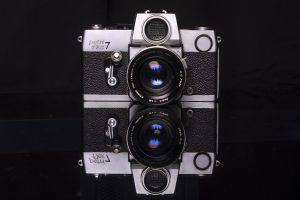
Also like other camera makers, Petri went with an angled shutter release on the front plate of the camera. I find that these types of front releases are very comfortable and somewhat improve stability when firing the shutter as inward pressure is directed towards your face, which when the camera is already up against your face, resists body shake like a top plate shutter release sometimes might have.
Up front, we also see the 10 second mechanical self timer, a flash sync port, and the round opening for the mercury battery that powers the meter.
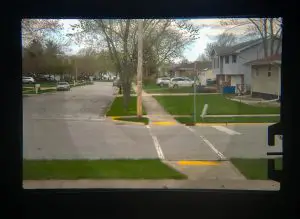
The Petri Flex 7 had a reasonably bright viewfinder which used a focusing screen with a Fresnel pattern to even out the light across the frame. Shooting outdoors with the f/1.8 lens and brightness is even with little to no vignetting across the frame. With prescription glasses, I had no problem achieving sharp focus and seeing the entire screen.
A large microprism circle is in the center for sharp focus, along with a lighter color ring to indicate the metered area. A match needle display in the bottom right corner is used for proper exposure.
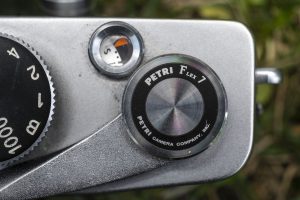
The Petri Flex 7 had a competitive feature set compared to other mid level SLRs of the era like the Minolta SR-7 and Yashica J7 which now that I write that, could be another reason Petri called it the ‘7’ to compete with other similarly featured models. Whatever the case, the camera itself should be a fine photographic tool, that when combined with Petri’s excellent lenses would produce excellent images.
Except that this being a Cameras of the Dead article, we’re talking about a non working camera. I tried everything I could, from opening the bottom plate and trying to liberally lube everything to trying “percussive persuasion” on the camera’s various parts to no avail. The camera was dead, and from talking to other collectors, it seems like more Petri Flex 7s are dead than working, so I didn’t even bother trying to find another.
The Petri Flex 7 had a good feature set for it’s time, had a good selection of lenses, and a distinct look, but for this one, looking at it is about all that it’s good for as this one’s a goner.
Related Posts You Might Enjoy
External Links
http://camera-wiki.org/wiki/Petri_Flex_7
https://vintagecameralab.com/petri-flex-7/

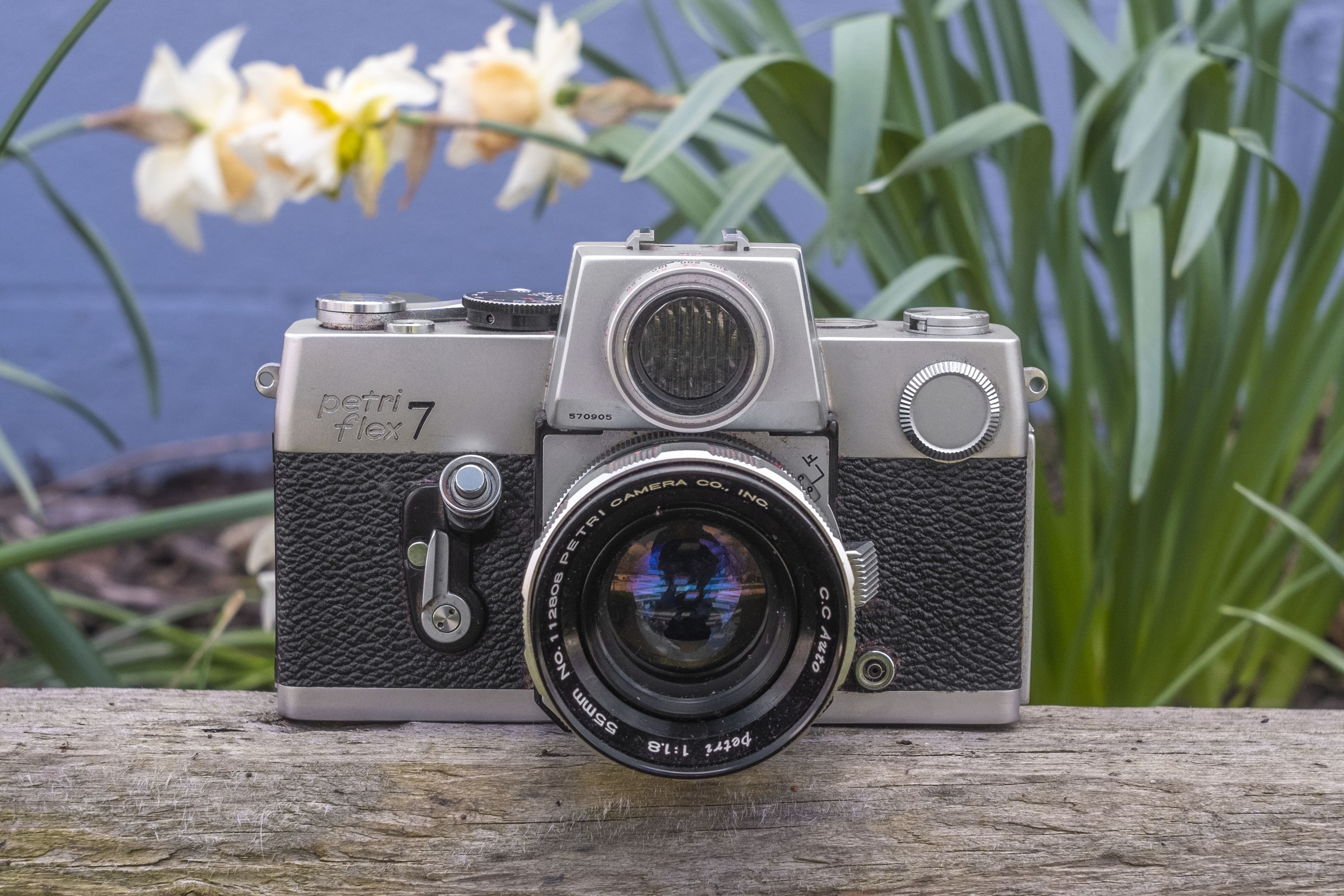
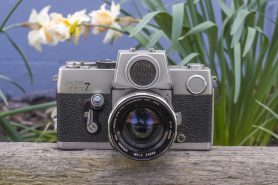

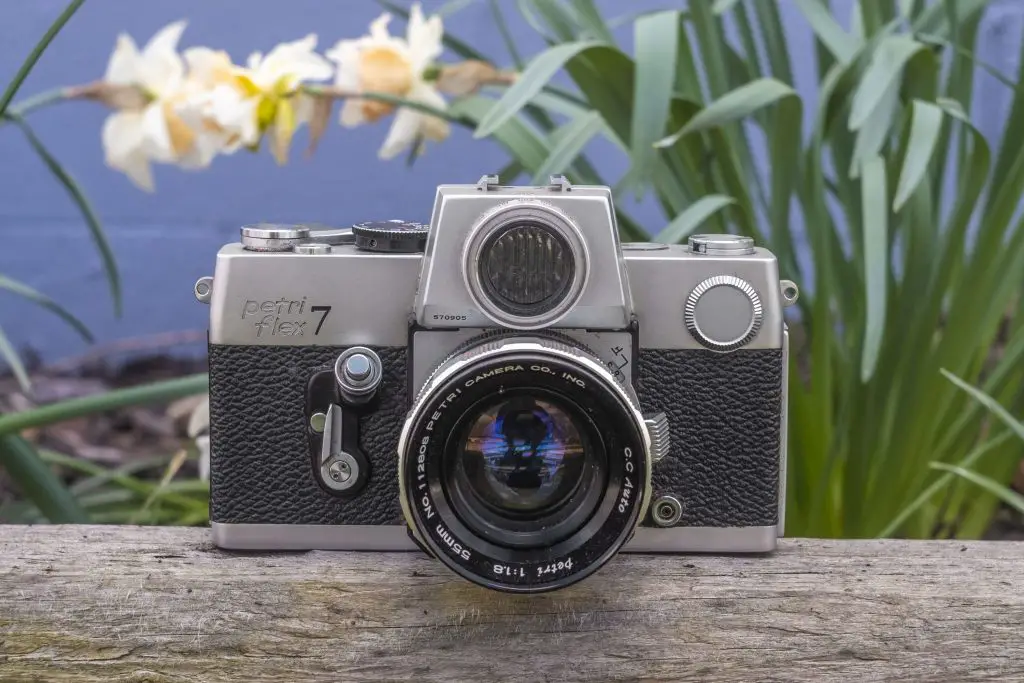
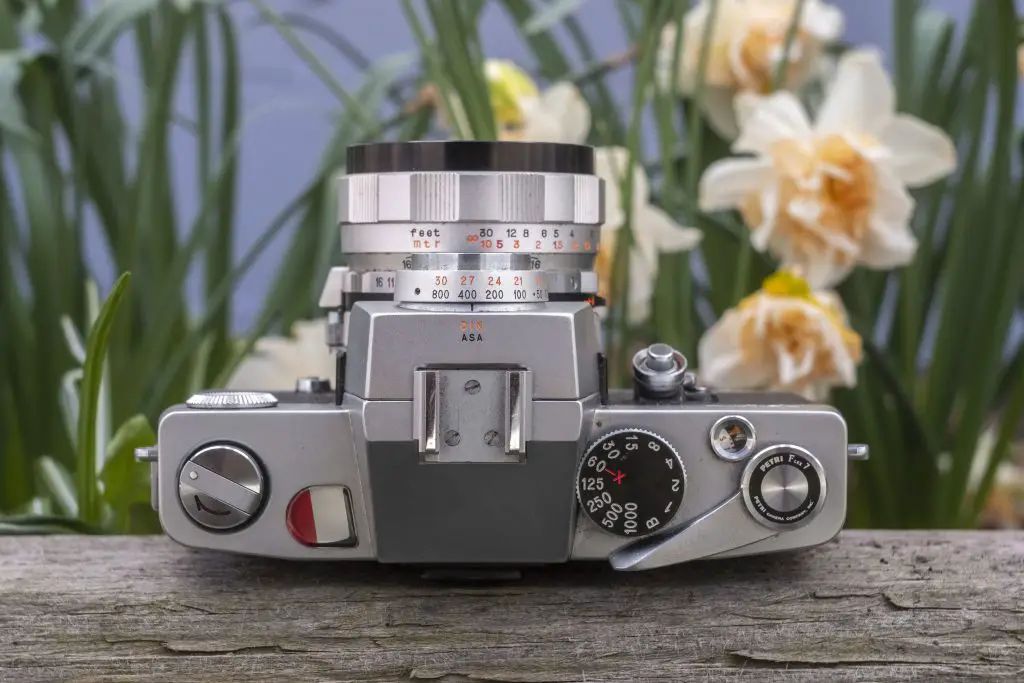
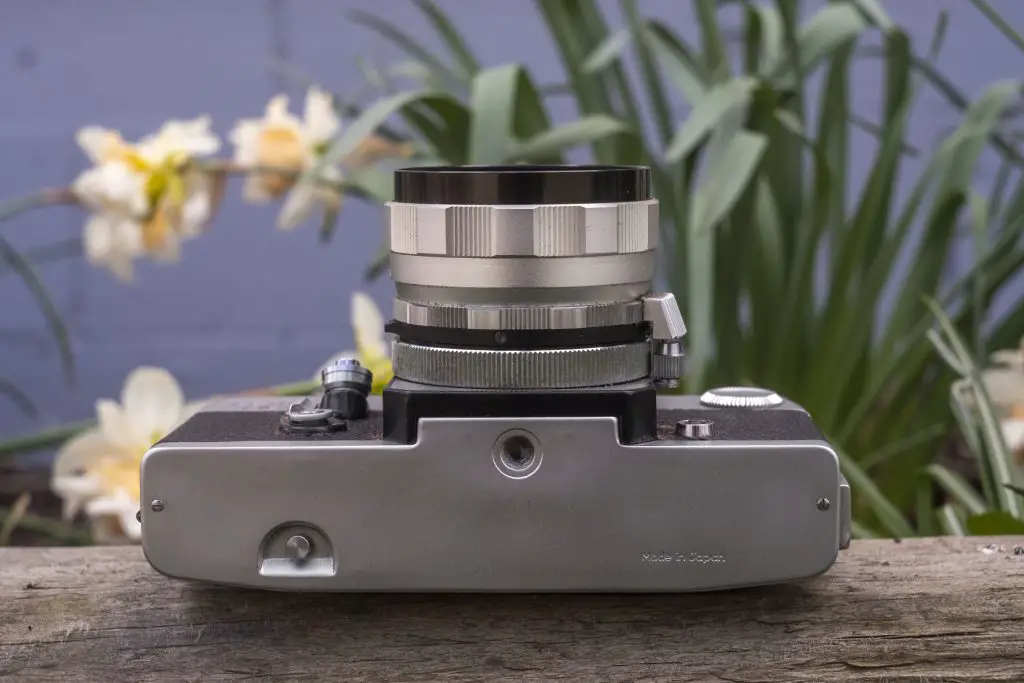
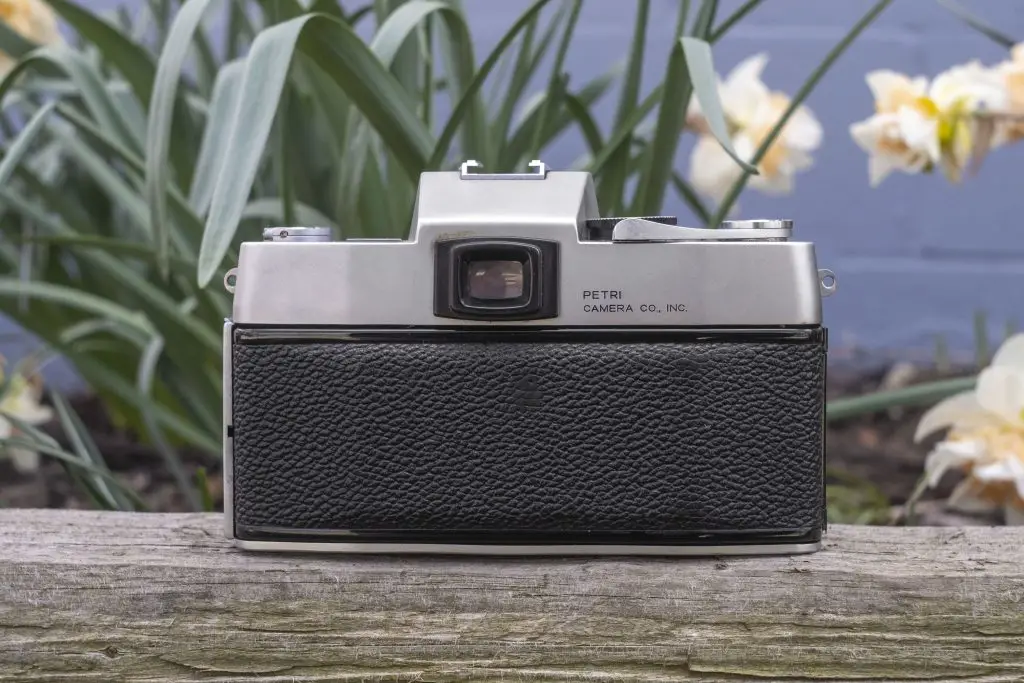
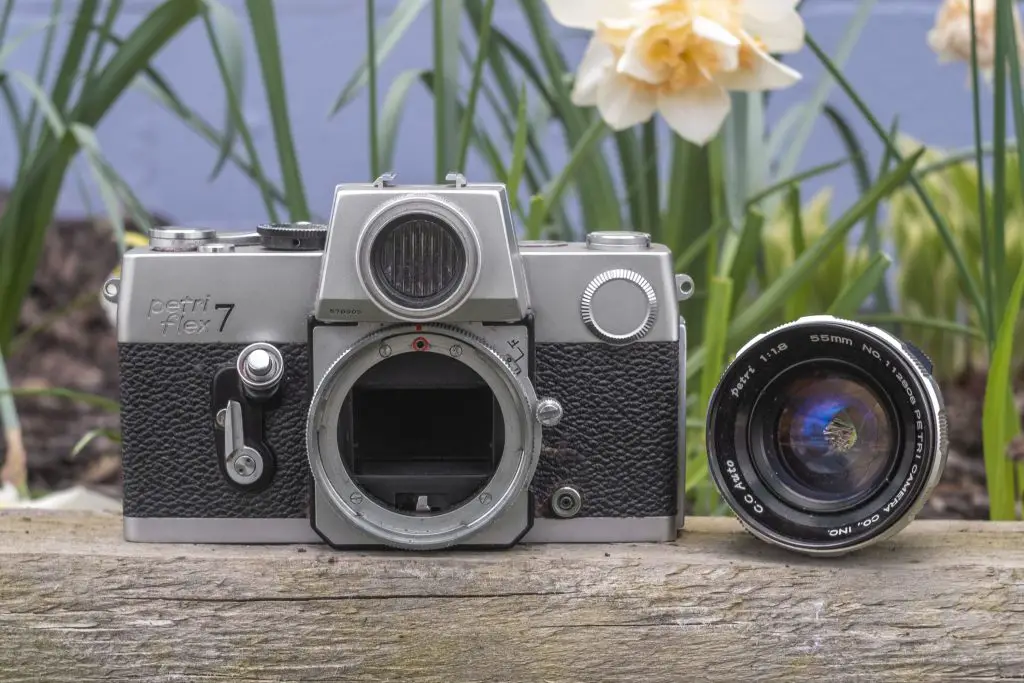
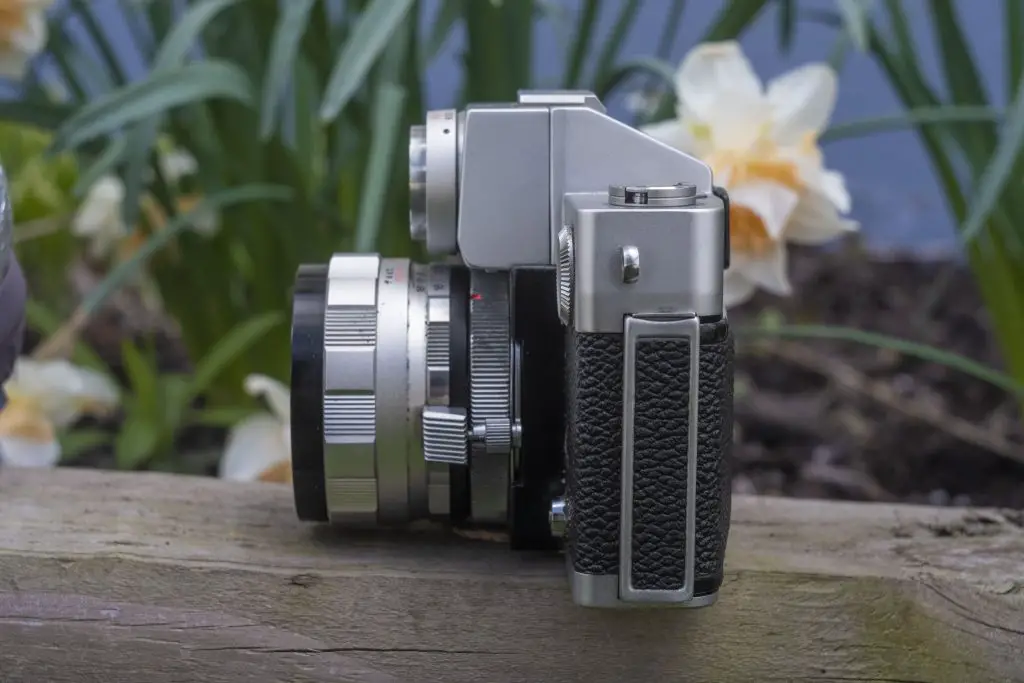
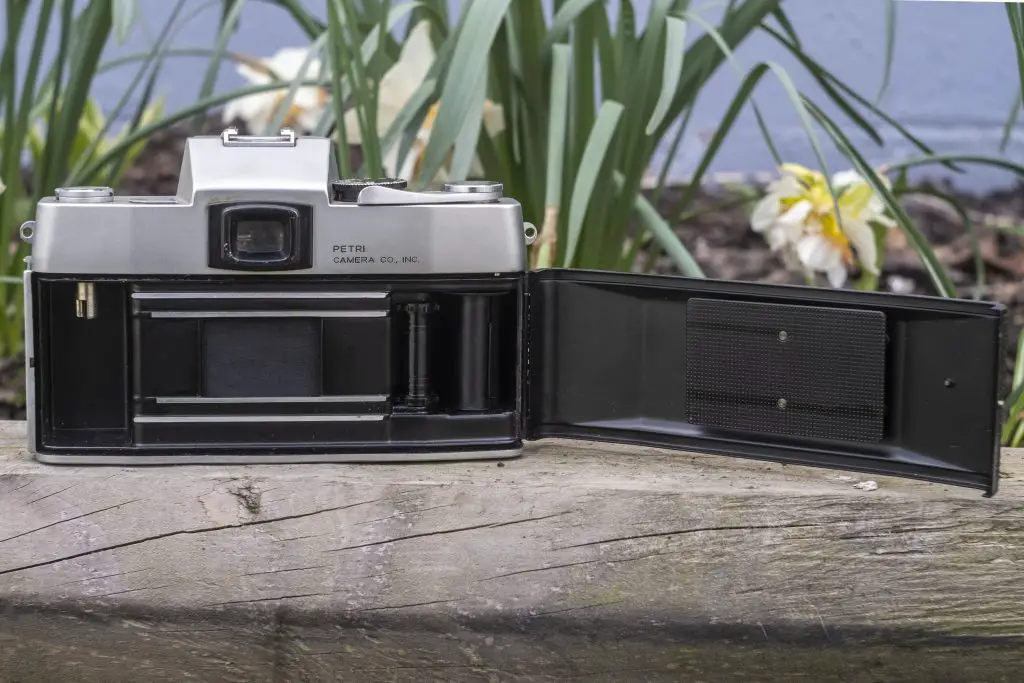
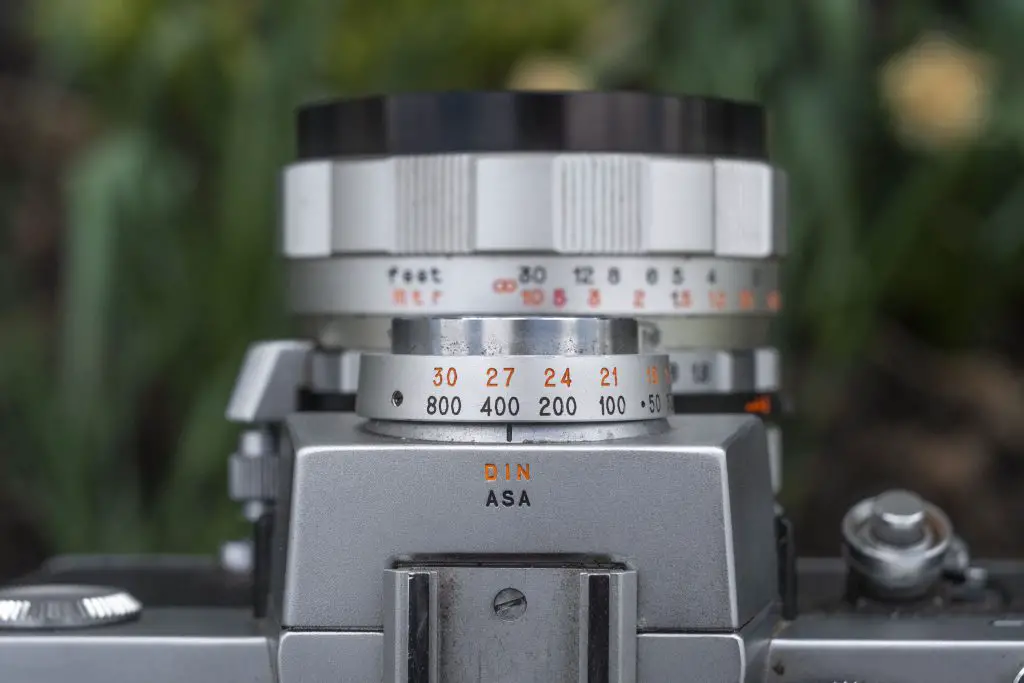
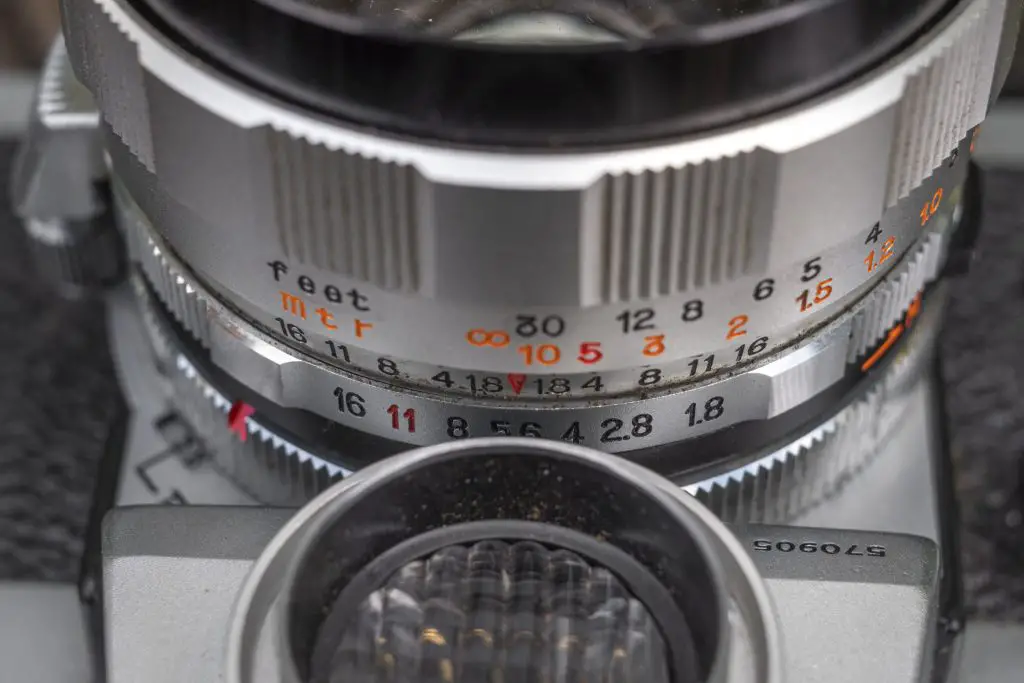
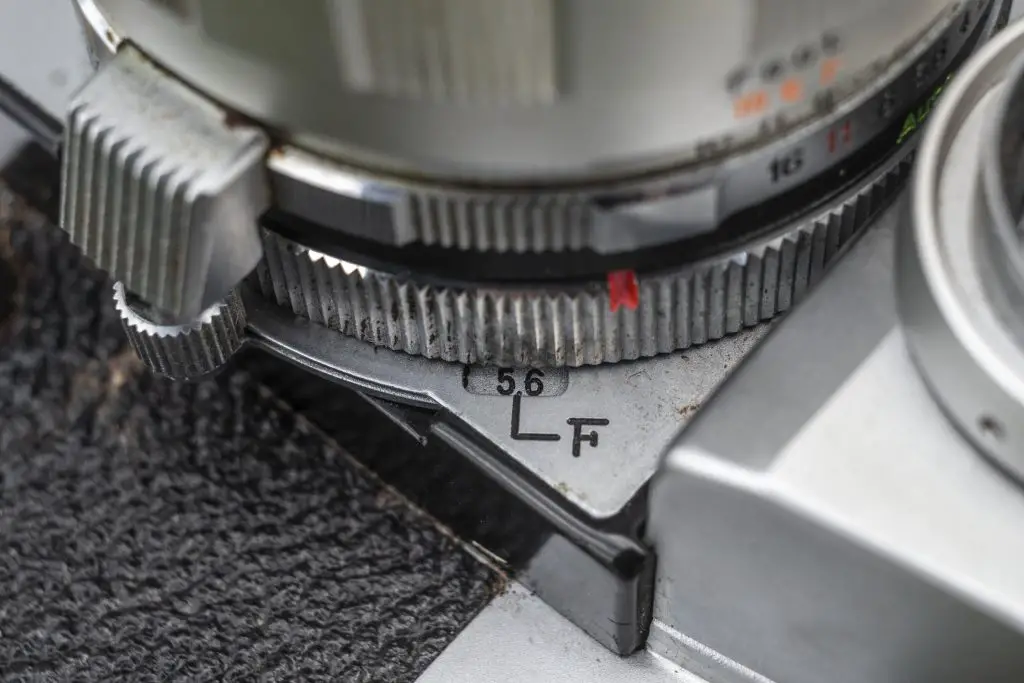
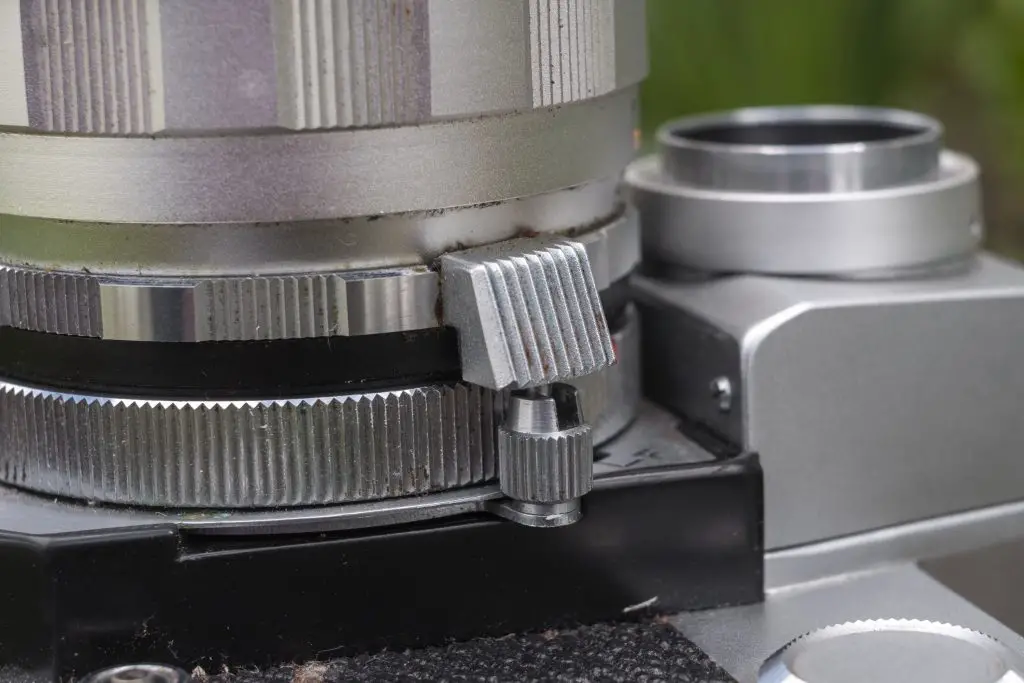
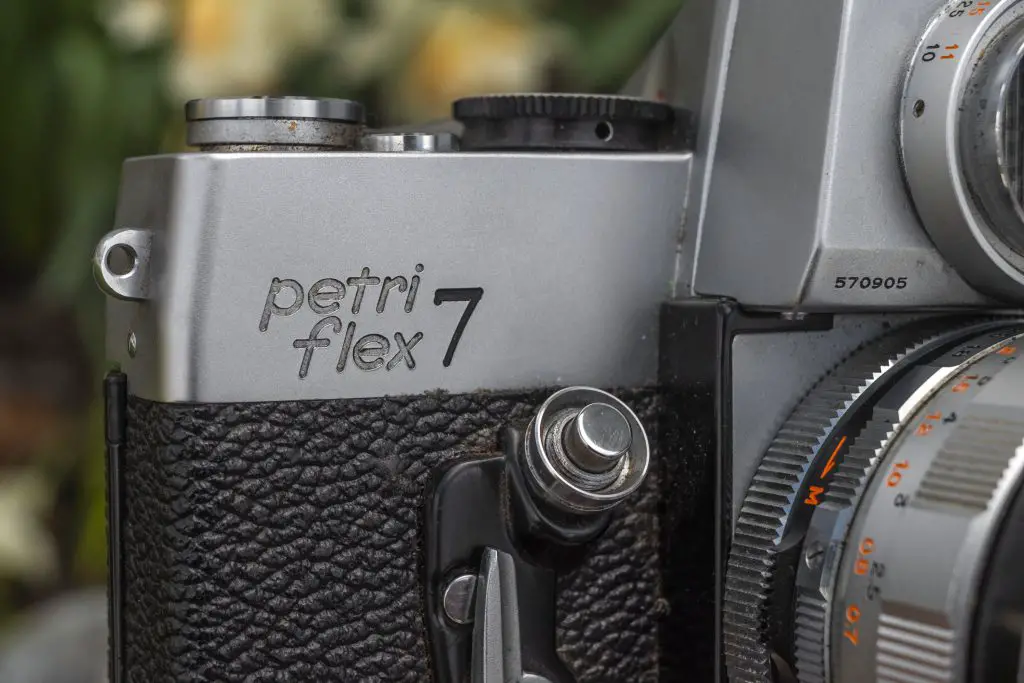
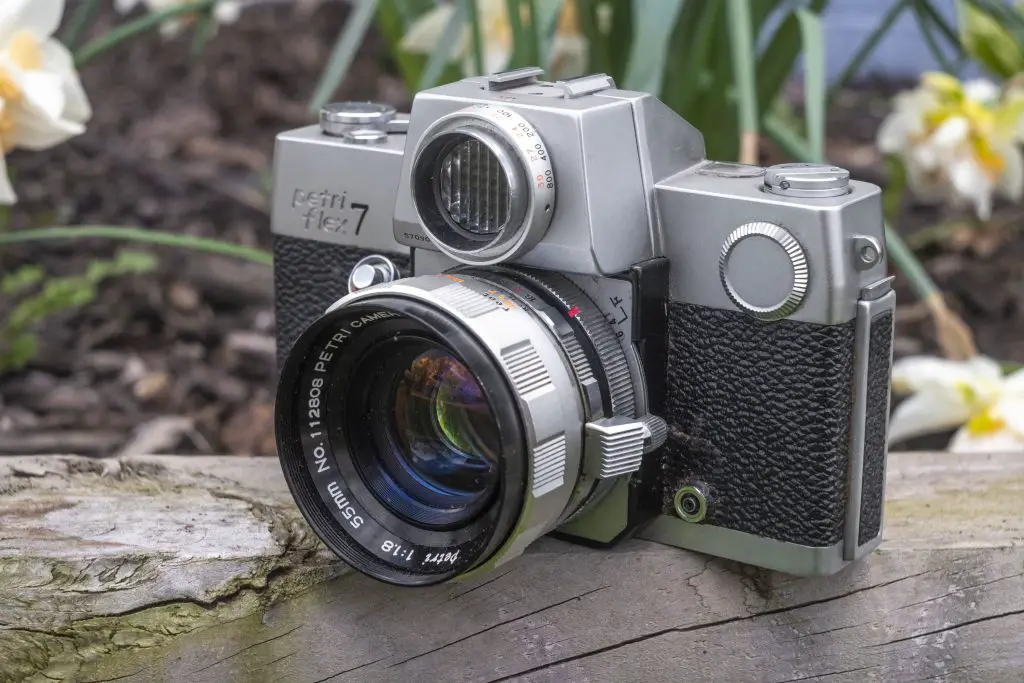
If you ever find a Petri SLR or RF these days that is truly functional, keep it under lock and key, it is that rare. The main market for Kuribayashi gear these days is to folks who shoot IR. Certain of their earlier lenses (all M42, I believe) transmit more than the normal percentage of IR wavelength light. These lenses command insane prices on eBay, but they satisfy the needs of folks shooting color IR on digital.
I agree. In my opinion based on the samples I’ve personally handled, I feel that Petri is similar to Miranda, in that the earlier models are built to a higher tolerance. I’ve found that the earlier Petri rangefinders, along with the earlier Miranda SLRs generally still work OK. It’s not until the mid to late 60s where quality control started to nosedive.
I was just looking through and playing with my cosmetically great Petri Rangefinders (which led me here circuitously), a 7s 2.8 , 7s 1.8, 7 2.8, and a 35 1.9 Color Corrected—all with original cases and caps. All shutter speeds fire, and the circle-eye light meters on the 7 series all work well. I put a roll through the 7s 2.8 and it did great using the light meter. My main complaint is both 7s’s have slightly wobbly lens barrels, but it did not interfere with sharpness. The 35 1.9 CC is a much more substantial camera without a meter, and impressively ergonomic—and I’m looking forward to shooting it! (I do also have a broken Petri SLR that I got before I knew better.)
Clearly inspired by the look of the Contarex; there can be no other reason for the placement of such a large, round CdS meter at that location. The Contarex had a selenium meter, which had to be large. CdS meters don’t have to be large, so this was an intentional design choice that was not driven by technical necessities.